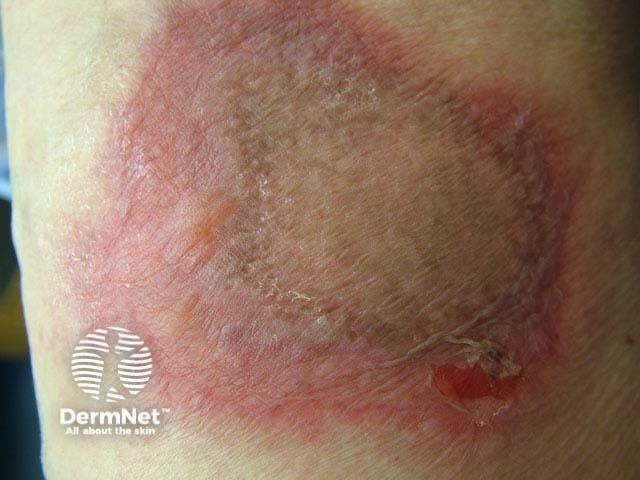Main menu
Common skin conditions

NEWS
Join DermNet PRO
Read more
Quick links
Cutaneous adverse reactions to medications are common; many are non-immunological in nature. This quiz considers some drug eruptions believed to be immunologically-mediated ('drug allergy'), or that are at least idiosyncratic in nature.
Often it is difficult to be certain whether a rash is due to drug, a skin disease or an underlying illness. A careful drug history is essential, considering prescription and over-the-counter medicines, topical agents, herbal remedies and supplements. Previous exposure, dose, duration and frequency of drug administration should be established. Refer to standard textbooks and obtain specialist advice from a dermatologist as necessary.
For each of the ten cases, study the image(s) and then answer the questions. You can click on the image to view a larger version if required.
Each case should take approximately 2 minutes to complete. There is a list of suggested further reading material at the end of the quiz.
When you finish the quiz, you can download a certificate.

Name this skin condition.
Fixed drug eruption due to paracetamol
What are its clinical features?
Fixed drug eruption gets its name because lesions tend to recur in the same area when the offending drug is given again. Painful round or squarish purple swollen or blistered plaques suddenly appear 30 minutes to a few hours after drug administration. They peel off over a week or so leaving a purplish postinflammatory hyperpigmentation that persist for weeks or months. Perioral, periorbital and genital sites are common but any site may be affected.
List drugs that are commonly responsible.
The cause is often a medication that is taken intermittently such as paracetamol, antibiotics or bowel preparations. Identification of the cause can be very challenging; it is remarkable how patients omit to tell you about the causative medicine! Food items have rarely also been implicated.